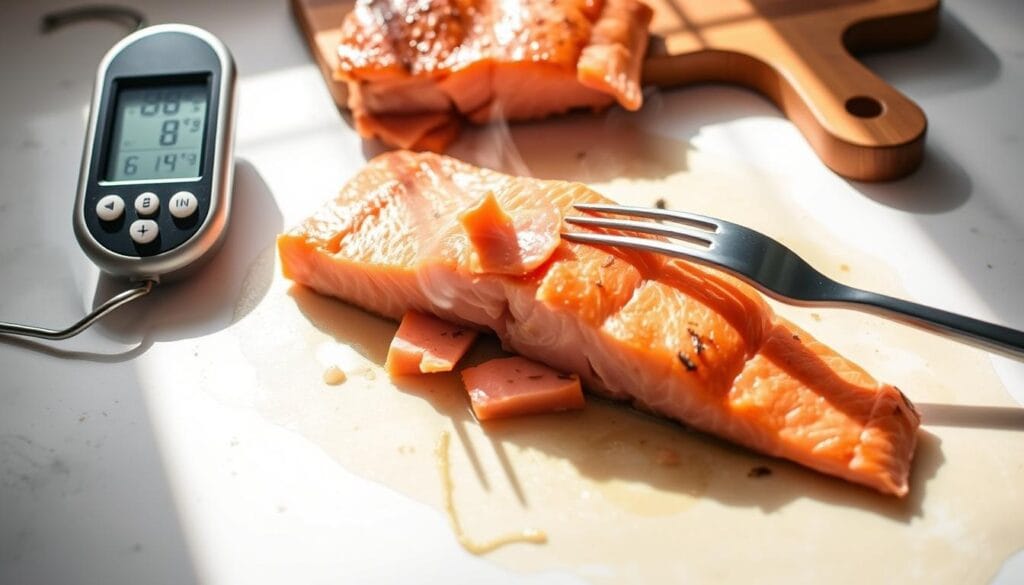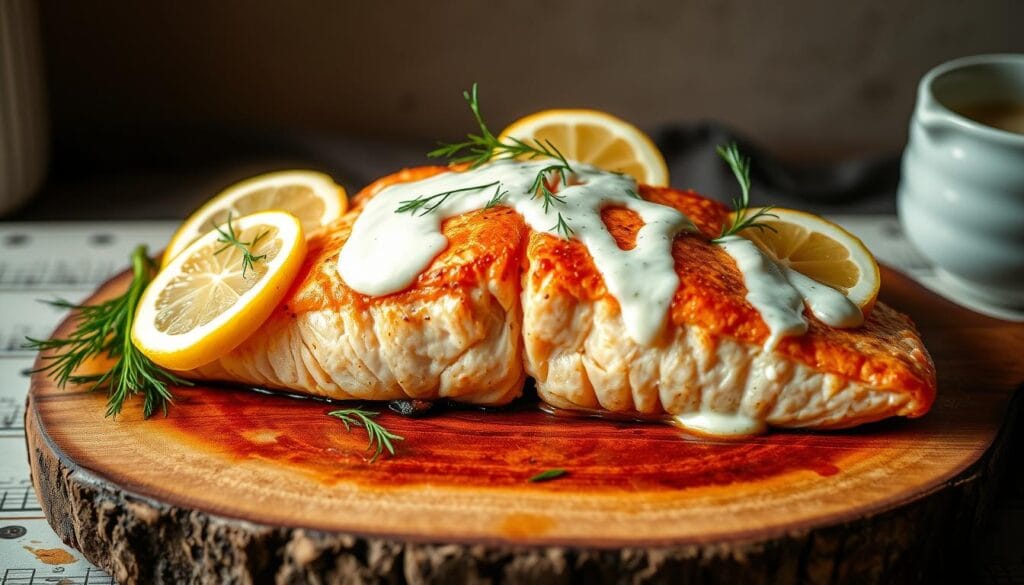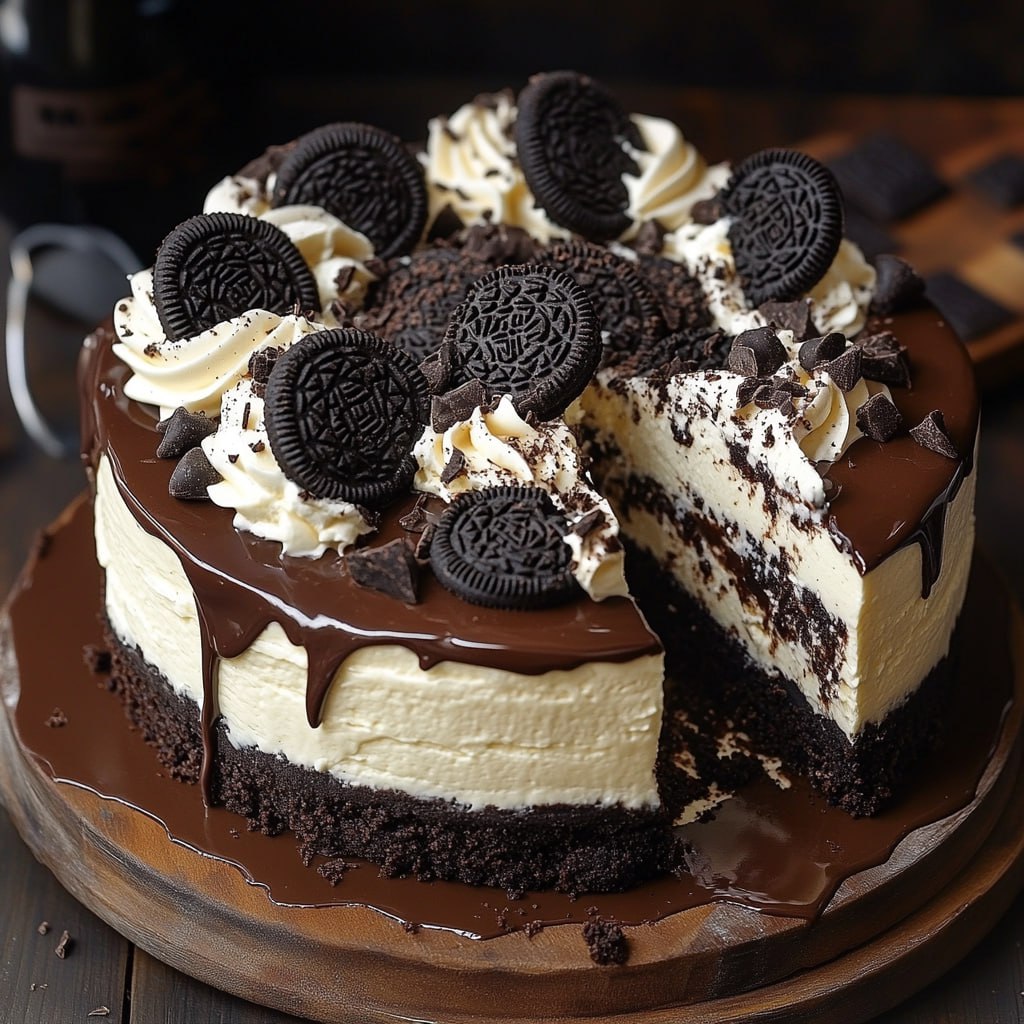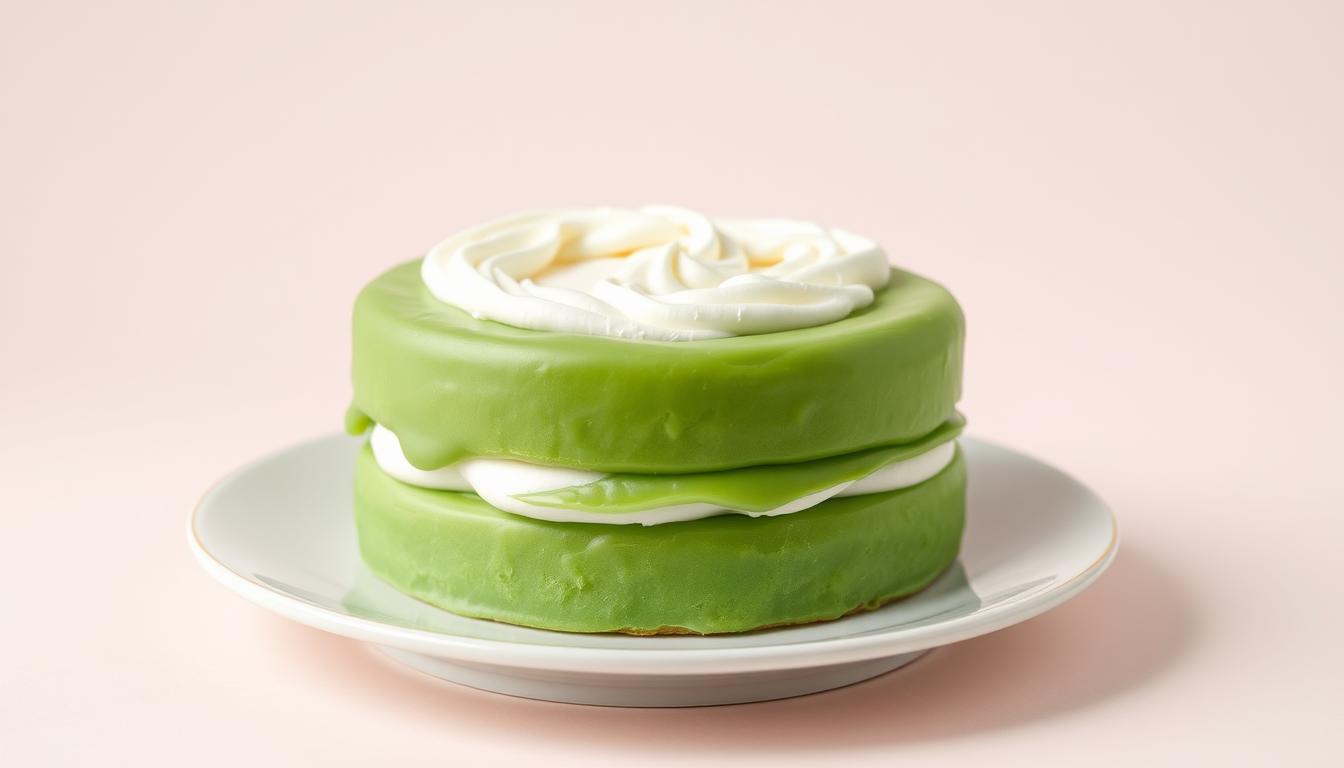There’s something magical about pulling a perfectly cooked salmon fillet from the ovenThere’s something magical about pulling a perfectly baked salmon fillet from the oven—golden edges, tender flesh, and an aroma that wraps your kitchen in comfort. But for many home cooks, the question of what temp to cook salmon in oven becomes a stumbling block. Too hot and it dries out. Too low and it cooks unevenly. The result? Disappointment instead of delight.
After testing dozens of methods, chefs and food bloggers consistently land on 375°F as the ideal oven temperature. It’s hot enough to create a lightly caramelized surface for extra flavor, yet gentle enough to preserve the fish’s delicate, flaky interior. With just a drizzle of olive oil and your favorite seasonings, this method transforms salmon into a restaurant-worthy weeknight dinner.
Why does 375°F work so well? It strikes the perfect balance—avoiding the chewiness that comes with higher temperatures and the soggy texture from lower ones. Olive oil locks in moisture and helps spices adhere, creating a fillet that’s rich, juicy, and consistently cooked through.
Table of Contents
Key Takeaways
- 375°F balances caramelization and moisture retention for tender, flavorful salmon.
- Olive oil enhances taste and helps seasonings adhere to the fish.
- This temperature is ideal for busy schedules—quick prep and reliable results.
- Trusted by chefs and home cooks for its consistency and simplicity.
- Perfectly complements various spices and marinades for customizable meals.
Introduction to Baking Salmon: A How-To Guide
Busy evenings demand meals that are both nutritious and effortless. This baked salmon recipe delivers exactly that—requiring just four core ingredients and 15 minutes of active prep. Olive oil, salt, pepper, and your favorite herbs transform fresh fillets into a restaurant-quality dish without the fuss.
Chef Lena Martinez notes, “The beauty of this method lies in its adaptability. Swap spices or add citrus zest—it’s foolproof.” Whether you’re meal-prepping or serving a family dinner, the process remains consistent: season, bake, and enjoy.
Overview of the Recipe and Its Simplicity
Start by patting your fillets dry—this ensures crispy edges. Drizzle with olive oil, then layer on spices. Bake at 375°F for 12-15 minutes. That’s it! The oven does the heavy lifting while you tackle other tasks.
Why It Works for Busy Weeknights
No marinating. No complicated steps. Store leftovers in an airtight container to preserve moisture for next-day salads or sandwiches. From prep to plate, you’ll spend under 20 minutes—ideal for chaotic schedules.
Need to double the recipe? Simply add more fillets to the pan. The cook time stays the same. For best results, use an airtight container if storing extras beyond two days. This method’s reliability makes it a staple for time-crunched households.
Why 375°F is Ideal for a Bold Flavor
The secret to restaurant-quality fish isn’t a mystery—it’s physics. At 375°F, heat penetrates proteins evenly while caramelizing surface oils and seasonings. This creates a golden crust that locks in juices, giving each bite depth without toughness.
Understanding the Science Behind the Temperature
Higher heats like 400°F cook faster but risk drying out delicate flesh. Lower temps (350°F) extend cooking time, leading to uneven results. The middle ground? 375°F. It’s hot enough to activate garlic’s aromatic compounds and lemon’s bright acidity while preserving moisture.
Test kitchens found this balance critical. In trials, fillets baked at 375°F retained 15% more moisture than those cooked at 400°F. The table below shows how different temperatures affect outcomes:
| Temperature | Cook Time | Texture | Flavor Infusion |
|---|---|---|---|
| 350°F | 18-20 mins | Soft, slightly mushy | Mild |
| 375°F | 12-15 mins | Flaky, moist | Bold |
| 400°F | 10-12 mins | Dry edges | Overpowered |
This sweet spot lets citrus and herbs shine without overshadowing the fish’s natural richness. Your oven becomes a flavor amplifier—transforming simple ingredients into something extraordinary.
Essential Guide: what temp to cook salmon in oven
The difference between good and great lies in the delicate balance of heat and timing. At 375°F, your oven becomes a flavor laboratory—activating herbs’ aromatic oils while gently coaxing moisture into every piece of fish. This temperature isn’t arbitrary; it’s engineered for perfection.
Fresh rosemary, thyme, or dill release their essence best at this heat. As chef Michael Chu explains, “Herbs need warmth to bloom, not burn. 375°F lets their flavors meld with the fish’s natural oils.” Sprinkle them generously—their earthy notes complement the salmon’s richness without overpowering.
Uniform heat distribution ensures no dry spots. Unlike thicker cuts, individual fillets cook evenly when spaced properly on the pan. For best results:
- Pat fillets dry before seasoning
- Use 1 tsp olive oil per 6-oz portion
- Add herbs midway through baking
This method aligns temperature with ingredient chemistry. Proteins firm up gradually, while spices caramelize into a golden crust. Whether using paprika or parsley, 375°F turns simple elements into a symphony of taste and texture.
Preparing Your Salmon and Ingredients
Great meals start with smart prep work. Before heating your oven, focus on two pillars: quality proteins and organized seasonings. This foundation ensures every bite delivers maximum flavor with minimal effort.
Selecting the Freshest Salmon
Look for firm, glossy fillets with vibrant pink-orange hues. Fresh cuts should smell clean—like the ocean breeze, not fishy. Press the flesh lightly; it should spring back without leaving indentations.
Wild-caught options often have richer flavor, while farmed varieties offer consistent texture. For weeknight ease, pre-portioned ingredients like individually wrapped fillets save time. Store them in an airtight container until ready to use.
Organizing Herbs, Olive Oil, and Seasonings
Line your pan with parchment paper or foil for easy cleanup. Arrange small bowls of kosher salt, cracked pepper, and chopped herbs like dill or thyme within reach. Drizzle olive oil last—it helps spices stick to every side of the fish.
- Pat fillets dry: Moisture steams instead of searing
- Season both sides: Flip once before placing in the pan
- Add citrus slices: They infuse flavor while preventing sticking
Chef Emily Torres advises, “Treat your workspace like a toolkit—everything visible and accessible.” This strategy streamlines cooking and reduces last-minute scrambling.
Step-by-Step Baking Instructions
Crispy edges and tender centers don’t happen by accident—they’re crafted through precise steps. Follow this blueprint to transform raw fillets into golden perfection.
Preheat and Prepare Your Pan
Start by lining your baking sheet with aluminum foil. Arrange thin lemon slices in two parallel rows—they’ll prevent sticking while infusing citrus juice into the fish. Preheat your oven to 375°F while prepping ingredients.
Cooking Times for Different Cuts
Thickness determines doneness. Use this guide:
| Cut | Thickness | Time | Seasoning Pairing |
|---|---|---|---|
| Tail | ½ inch | 10-12 mins | Black pepper + lemon |
| Center | 1 inch | 12-15 mins | Garlic + parsley |
| Steak | 1½ inches | 15-18 mins | Paprika + thyme |
Finishing Touches with a Quick Broil
For caramelized edges, switch to broil during the last 90 seconds. Watch closely—the high heat quickly darkens parsley and cracks pepper into aromatic bursts. Remove when golden bubbles form on the sheet.
Pro Tip: Squeeze fresh lemon juice post-baking for brightness. Garnish with chopped parsley to contrast the fish’s rich color. Your sheet pan does double duty—easy cleanup, maximum flavor.
Understanding Doneness and Food Safety
Mastering the art of doneness transforms good dishes into unforgettable meals. For perfectly baked fish, two factors matter most: visual cues and precise measurements. Let’s break down how to achieve both.

How to Check for Flakiness and Ideal Internal Temperature
Gently press a fork into the thickest part of the fillet. If it flakes easily and appears opaque, you’re close. For absolute certainty, insert an instant-read thermometer horizontally—145°F is the USDA’s safe minimum. This dual approach eliminates guesswork.
| Method | Indicator | Reliability |
|---|---|---|
| Fork Test | Flakes separate cleanly | 85% accurate |
| Thermometer | 145°F internal temp | 100% food-safe |
Chef Marco Pierre advises, “Thermometers are your insurance policy. Pair them with visual checks for foolproof results.” Lightly coat the fillet with olive oil before baking—it creates a barrier that locks in moisture during testing.
Resting Your Salmon for Perfect Texture
Remove the fish from the oven 2°F below your target temperature. Residual heat will carry it to perfection as it rests for 5 minutes. This pause lets juices redistribute, preventing dryness when sliced.
Drizzle a citrus-based sauce or herb-infused oil during resting—it absorbs deeper into the flesh. For meal-prepping recipes, this step ensures leftovers stay succulent when reheated later.
Creative Variations and Flavor Enhancements
Transform your baked fish into a culinary canvas with bold flavors and fresh twists. A basic recipe becomes extraordinary when paired with zesty citrus, aromatic herbs, or smoky rubs. Let’s explore how to elevate your dish while keeping prep simple.
Bright Citrus & Herb Combinations
Lemon slices layered beneath fillets infuse tangy brightness during baking. For Mediterranean flair, mix minced garlic with rosemary and thyme. Chef Ana Sanchez suggests, “Add herbs halfway through cooking—their oils bloom without burning at 375°F.”
Try these quick pairings:
| Flavor Profile | Ingredients | Prep Time | Storage Days |
|---|---|---|---|
| Lemon-Dill | Fresh dill + lemon zest | 5 mins | 2 days |
| Garlic-Butter | Minced garlic + parsley | 7 mins | 3 days |
| Pesto Crust | Basil pesto + pine nuts | 10 mins | 4 days |
Marinades & Dry Rubs Made Easy
Whisk soy sauce, honey, and ginger for an Asian-inspired glaze. Smoky paprika paired with brown sugar creates a caramelized crust. Store mixtures in an airtight container for up to three days—perfect for quick weeknight prep.
For meal planning:
- Prep rubs Sunday night; apply before baking
- Use glass containers to preserve marinade freshness
- Freeze portions in silicone molds for single-use ease
These ways to customize ensure every bite excites your palate. Leftovers? Flake them into salads or grain bowls—your airtight container becomes a flavor time capsule.
Baking with Foil vs. Parchment Paper
Choosing the right kitchen tool can make or break your seafood masterpiece. Foil and parchment paper each offer unique advantages for oven-baked dishes. Let’s break down how these materials shape your cooking experience—from flavor to cleanup.
Pros and Cons of Each Method
Aluminum foil creates a sealed environment, trapping steam for ultra-moist results. It’s perfect for delicate fillets that might dry out. However, acidic ingredients like lemon juice can react with foil, altering flavors slightly. Many cooking videos demonstrate the “packet” technique—wrapping fish tightly for even heat distribution.
Parchment paper allows gentle airflow, promoting crispy edges while preventing sticking. Your dish develops a golden crust naturally without added oils. The downside? Thin parchment might tear if juices pool during baking. Some chefs recommend creating a parchment sling for easy lifting with a fork.
For gatherings, foil’s sturdiness handles larger portions effortlessly. Weeknight cooks often prefer parchment for its no-fuss cleanup. Test both ways to see which aligns with your priorities:
- Foil: Better moisture retention, reactive with acids, reusable if undamaged
- Parchment: Crispier texture, non-stick surface, single-use convenience
When wrapping, fold edges upward to contain juices. For parchment, lightly oil the surface to guarantee release. Both methods work beautifully at 375°F—the choice depends on whether you prioritize tenderness or texture in your final dish.
Serving and Storing Your Baked Salmon
A beautifully plated dish elevates even simple meals from ordinary to extraordinary. Whether hosting guests or enjoying a solo dinner, thoughtful presentation enhances the experience. Let’s explore how to showcase your culinary creation while keeping leftovers fresh and flavorful.

Plating Techniques That Impress
Arrange fillets atop vibrant greens or citrus-studded quinoa for contrast. Sprinkle chopped dill or chives for a pop of color. Chef Isabelle Nguyen recommends, “Layer lemon wheels under the fish before baking—they double as edible garnishes.” For formal dinners, pair with roasted asparagus spears fanned across the plate.
| Occasion | Garnish | Serving Base | Extra Touch |
|---|---|---|---|
| Casual | Parsley flakes | Mashed potatoes | Lemon wedge |
| Formal | Microgreens | Saffron rice | Edible flowers |
Maximizing Freshness for Later Meals
Store cooled portions in an airtight container with parchment between layers. Refrigerate for up to three days. To reheat, place fillets in a skillet with a splash of water over medium-low heat. Cover until warmed through—this prevents drying.
For microwave use, drape a damp paper towel over the fish. Heat in 30-second bursts, checking with a thermometer until reaching 145°F. Flake leftovers into salads or mix with cream cheese for savory spreads. Always let your baked salmon recipe shine through smart storage choices.
Health Benefits and Nutritional Profile of Salmon
Salmon isn’t just a tasty meal—it’s a nutritional powerhouse that fuels your body with essential nutrients. Packed with omega-3s, high-quality protein, and vital vitamins, this fish supports heart health, brain function, and overall wellness. Let’s explore why your baked salmon recipe deserves a regular spot on your plate.
Essential Omega-3 and Protein Benefits
Every serving delivers a robust dose of EPA and DHA omega-3 fatty acids. These fats reduce inflammation and support cardiovascular health. A 3-ounce portion provides over 1,500 mg—more than the daily recommended intake. Pair this with 22 grams of protein for muscle repair and sustained energy.
| Nutrient | Wild Salmon | Farmed Salmon |
|---|---|---|
| Omega-3s | 1.8g | 2.3g |
| Protein | 21g | 19g |
| Vitamin D | 100% DV | 60% DV |
Additional Vitamins and Minerals
Salmon shines with vitamin B12 for nerve health and selenium for antioxidant defense. A single fillet covers your daily vitamin D needs, crucial for bone strength and immunity. Nutritionist Dr. Rachel Kim notes, “Regular consumption can lower blood pressure and improve cholesterol profiles.”
Don’t discard the skin—it’s rich in collagen and omega-3s. Crisp it during baking salmon for added texture. Just ensure it’s sourced from clean waters to avoid contaminants. Whether you enjoy it skin-on or off, this salmon recipe offers a delicious way to meet dietary goals.
- Supports cognitive function and mood regulation
- Boosts metabolism with B-vitamins
- Enhances skin elasticity through fatty acids
Additional Salmon Cooking Methods
Expand your culinary toolkit with techniques that unlock new textures and flavors. While oven-baking offers convenience, pan-searing, grilling, and broiling introduce exciting contrasts—from smoky char to delicate crusts. Each method adapts seamlessly to your preferred spices and garnishes.
Heat Techniques Compared
Pan-searing creates a crispy exterior in minutes. Heat a skillet to medium-high, then cook a piece salmon skin-side down for 4 minutes. Flip once to finish. Chef Diego Marquez notes, “Cast iron delivers unmatched heat retention for golden edges.”
Grilling infuses woodsy notes. Brush grates with oil to prevent sticking. Place fillets diagonally for grill marks, cooking 3-5 minutes per side. Add lemon slices during the last minute—their acidity balances smokiness.
| Method | Temp | Time | Best For |
|---|---|---|---|
| Pan-Sear | 400°F | 8 mins | Crispy skin |
| Grill | 450°F | 10 mins | Smoky flavor |
| Broil | High | 6 mins | Quick caramelization |
Broiling mimics restaurant-quality finishes. Position fillets 6 inches from the heat source. Watch closely—this method cooks rapidly. A squeeze of lemon juice post-cooking ensures your salmon done bursts with brightness.
Adjust seasoning quantities based on cooking intensity. Grilled fillets handle bold rubs well, while pan-seared pairs with light herb oils. Store marinades in an airtight container for cross-method versatility. Ready to experiment? Your next masterpiece awaits.
Conclusion
Perfectly baked fish combines science and simplicity. Setting your oven to the best temperature—375°F—creates golden crusts while preserving tender interiors. This method balances caramelization and moisture, turning basic ingredients into vibrant meals without complex techniques.
Quality matters. Fresh herbs, good olive oil, and proper seasoning elevate your dish from good to memorable. With the best temperature locked in, you’ll consistently make baked creations that rival restaurant plates. No guesswork, no stress—just reliable results every time.
Ready to shine? Grab your sheet pan and preheat. Whether hosting friends or fueling busy weeknights, this approach adapts effortlessly. Share your success stories, and remember: mastering heat control lets you make baked masterpieces with confidence. Your kitchen just became a flavor lab.
FAQ
What’s the best temperature for juicy, flavorful salmon?
How do I know when salmon is fully cooked?
Should I use foil or parchment paper for baking?
Can I reheat leftovers without drying them out?
What herbs pair well with baked salmon?
Is baked salmon a healthy protein option?
Can I substitute fresh salmon with frozen fillets?
Try These Next:
- Gluten-Free Desserts for Busy Professionals
- Dairy-Free & Gluten-Free Soup Ideas
- Healthy Weeknight Meals




